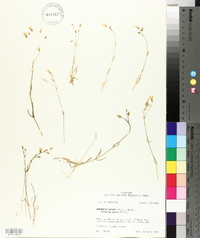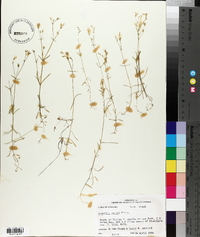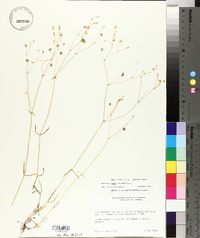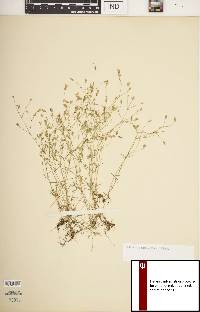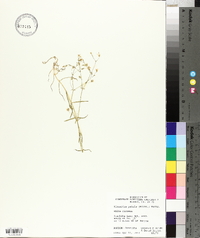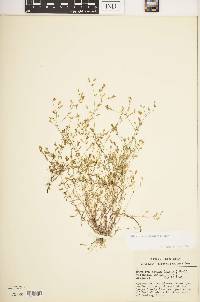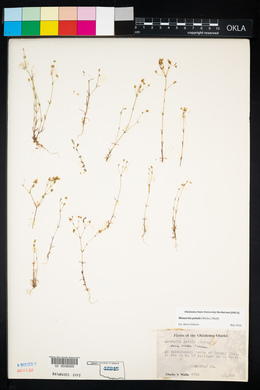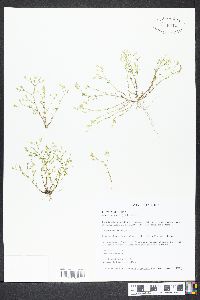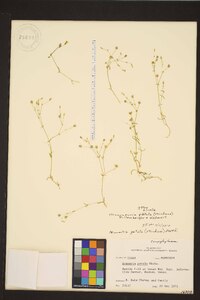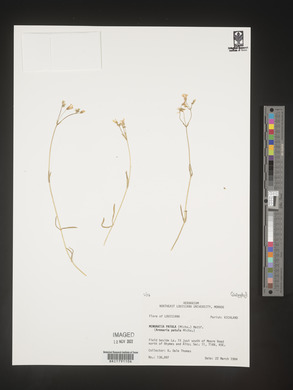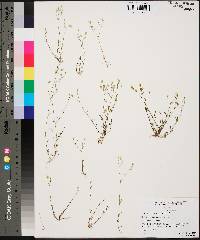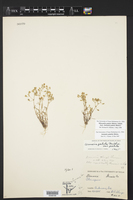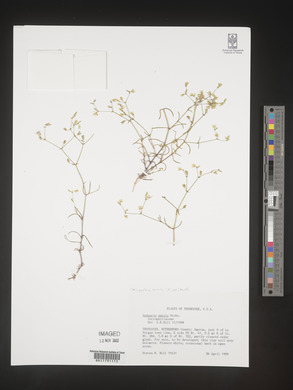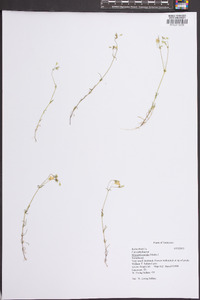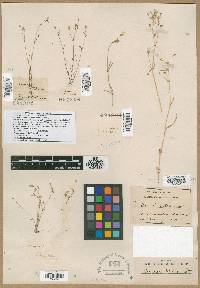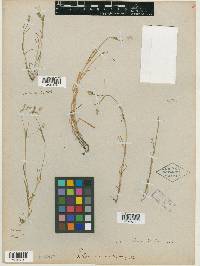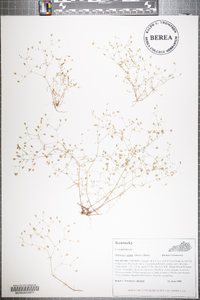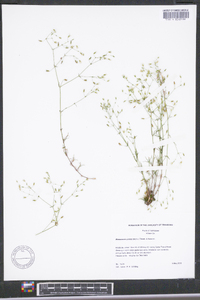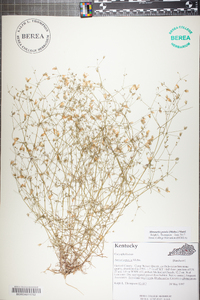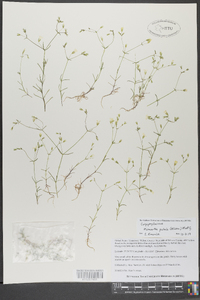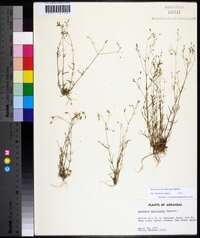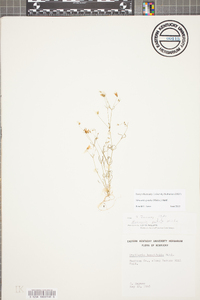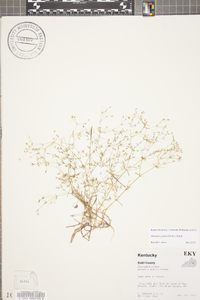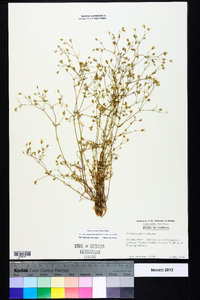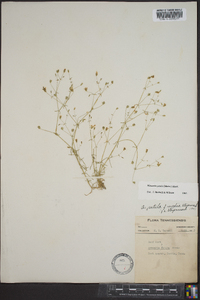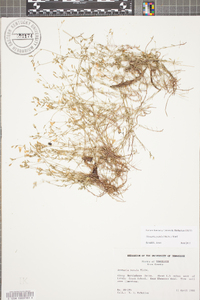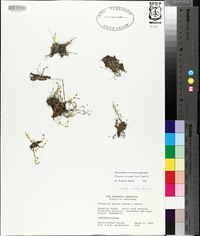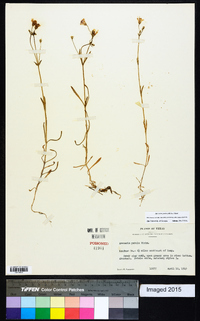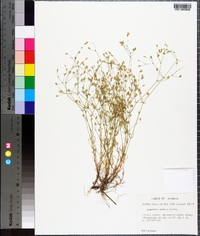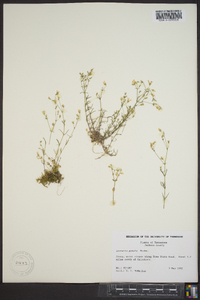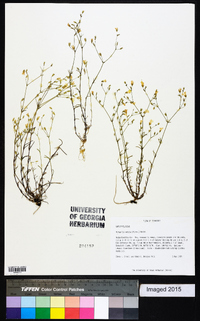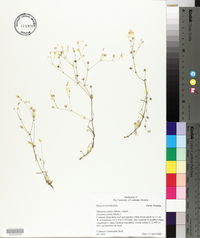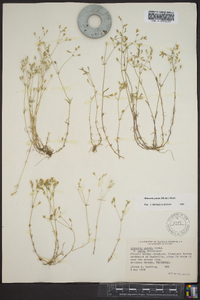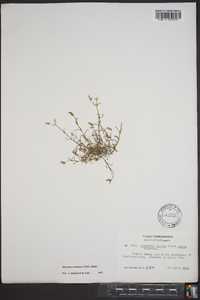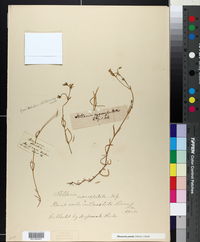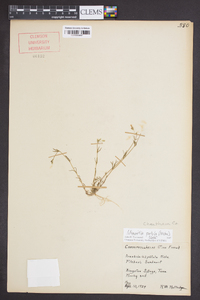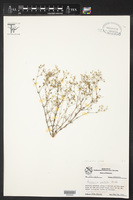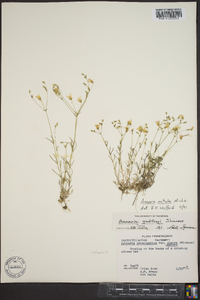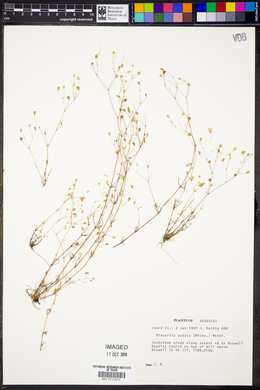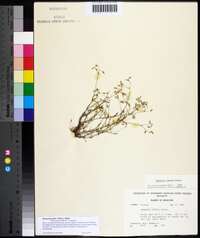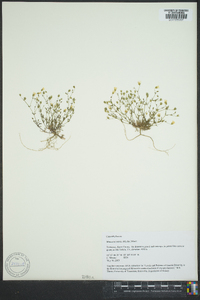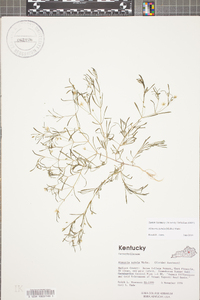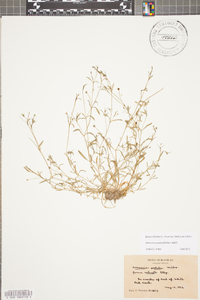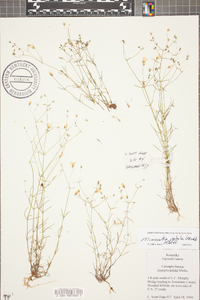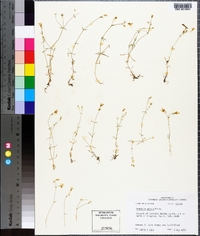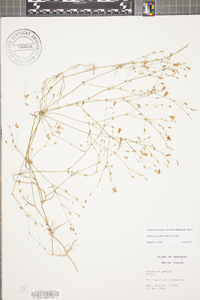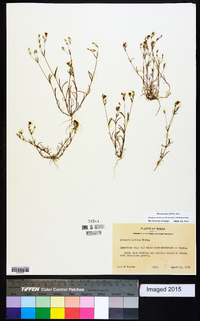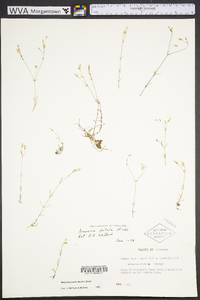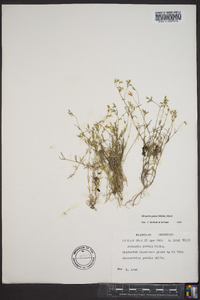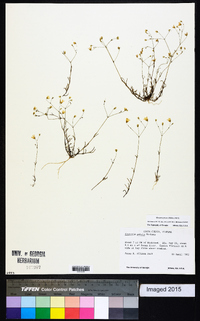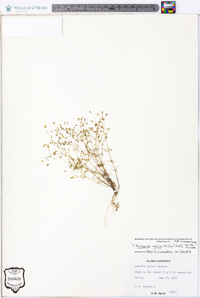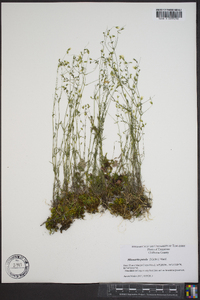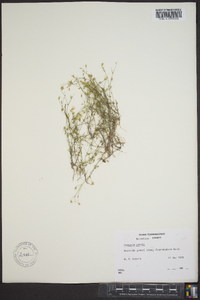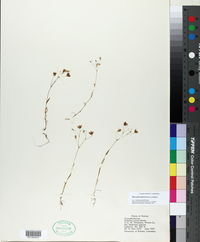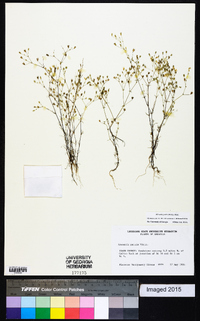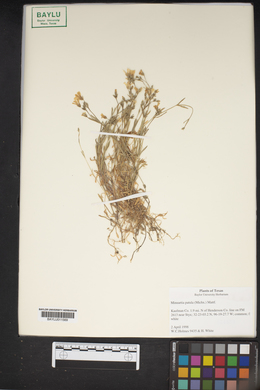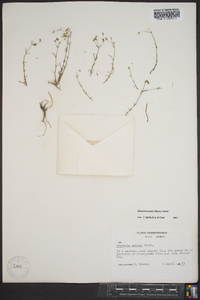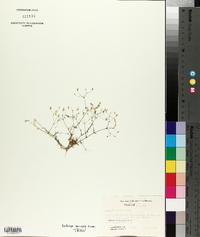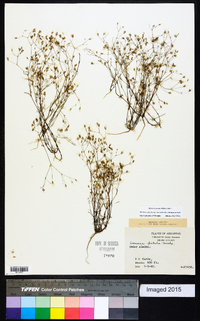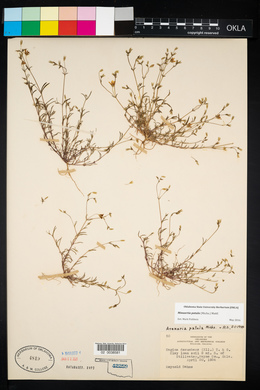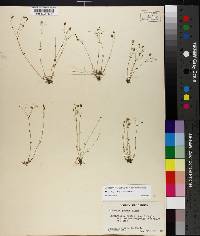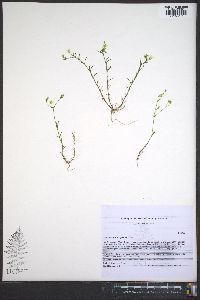
|
|
|
|
Family: Caryophyllaceae
Pitcher's False Stitchwort, more...Pitcher's Stitchwort
[Arenaria pitcheri, moreMinuartia patula (Michx.) Mattf., Minuartia patula var. patula (Michx.) Mattf., Sabulina patula (Michx.) Small, Stellaria macropetala Torr. & A. Gray] |
Plants winter annual or annual. Taproots filiform. Stems erect to ascending, green, 5-30 cm, glabrous or sometimes stipitate-glandular distally or throughout, internodes of all stems 1-7 times as long as leaves; wintering stems absent. Leaves overlapping proximally, connate proximally, with loose, scarious to herbaceous sheath 0.1-0.5 mm; blade straight to variously curved, green, flat, prominently 1-veined abaxially, linear, 2-20 × 0.5-1.5(-1.8) mm, flexuous, margins not thickened, herbaceous, smooth, apex green or purple, blunt to acute, flat, ± shiny, glabrous to stipitate-glandular; axillary leaves absent. Inflorescences 5-30-flowered, open cymes; bracts subulate to ovate, herbaceous. Pedicels 0.3-3 cm, stipitate-glandular. Flowers: hypanthium shallowly disc-shaped; sepals prominently (3- or) 5-veined, narrowly to broadly lanceolate (herbaceous portion narrowly to broadly lanceolate), 4-5.5 mm, not enlarging in fruit, apex green or purple, narrowly acute to acuminate, not hooded, glabrous to sparsely stipitate-glandular; petals obovate, 1.5-2.2(-3) times as long as sepals, apex rounded, broadly notched. Capsules on stipe ca. 0.1 mm or shorter, narrowly ellipsoid, 3-4.2 mm, shorter than sepals. Seeds reddish brown to black, suborbiculate, radicle obscure, slightly compressed, 0.5-0.6 mm, tuberculate; tubercles low, rounded. Flowering spring-early summer. Prairies, meadows, limestone barrens, and rocky outcrops in sandy, clayey, or gravelly soils; 0-500; Ala., Ark., Ga., Ill., Ind., Kans., Ky., La., Miss., Mo., Ohio, Okla., Pa., Tenn., Tex., Va., Wis. Minuartia patula and the related M. muscorum have received little attention in comparison to the granite-outcrop minuartias, the M. uniflora complex. J. A. Steyermark (1941) studied these taxa and described three forms, based chiefly on pubescence variation. Plants entirely glabrous [forma pitcheri (Nuttall) Steyermark] and those with sepals and pedicels somewhat stipitate-glandular (forma media Steyermark) were segregated from densely stipitate-glandular plants (forma patula). We do not feel that such variations deserve formal taxonomic recognition. Forma robusta, as defined by Steyermark, is here referred to M. muscorum. Most specimens of Minuartia patula have prominently five-veined sepals (seen especially easily in the glabrous forms); occasional plants from Georgia, Kentucky, and Virginia have glabrous sepals with only three strong veins, resembling those of M. muscorum; in other features, including the seeds, they are clearly referable to M. patula. The status of the plants with three-veined sepals remains ambiguous; J. A. Steyermark (1941) included them in his forma media and B. Maguire (1951) included them (in our opinion incorrectly) in his var. robusta.
From Flora of Indiana (1940) by Charles C. Deam On wooded gravelly slopes along streams and in shallow soil on sandstone bluffs. Local but very common in some of its stations. .…… Indiana Coefficient of Conservatism: C = 10 Wetland Indicator Status: FACU |
This project was made possible in part by the Institute of Museum and Library Services [MG-70-19-0057-19].
Powered by Symbiota

